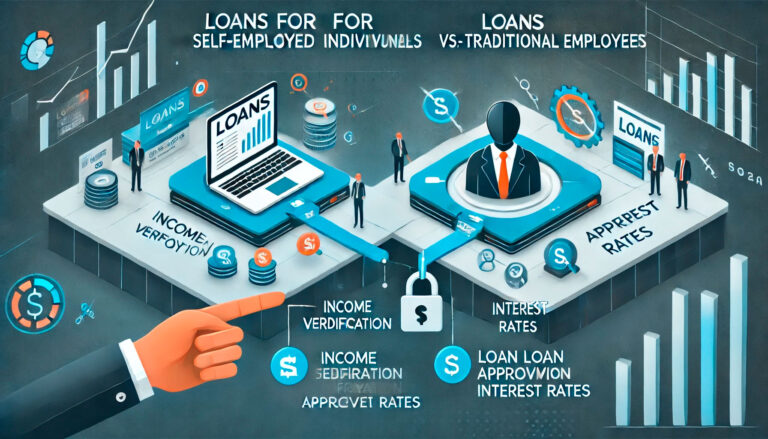
In recent years, peer-to-peer (P2P) lending has emerged as a significant disruptor in the world of finance, offering individuals an alternative to traditional banking for borrowing and lending money. This relatively new form of lending allows borrowers to connect directly with individual investors, bypassing the traditional financial institutions like banks that have long dominated the lending market. While P2P lending platforms have grown rapidly, their rise raises important questions about the future of traditional banking and how these new platforms are reshaping the financial landscape. In this article, we will explore the impact of P2P lending on traditional banks, examining how this alternative lending model has influenced borrowing practices, financial regulations, and even the very business models of established banks.
What is P2P Lending?
At its core, P2P lending allows individuals to borrow money from other individuals rather than from a bank or financial institution. Through online platforms, borrowers are matched with investors willing to lend money at competitive interest rates. These platforms serve as intermediaries, providing the infrastructure for borrowers and lenders to connect, while also handling the necessary background checks, credit assessments, and transaction processing. P2P lending has grown in popularity due to its ability to offer lower interest rates for borrowers, higher returns for lenders, and a more streamlined application process compared to traditional banks.
The rapid growth of P2P lending has been fueled by several factors, including the increasing demand for more flexible borrowing options, the desire for higher returns among investors, and advances in technology that make it easier to connect borrowers with lenders. Unlike banks, which rely on a traditional model of creditworthiness assessments based on credit scores and income levels, P2P lending platforms use alternative data points and algorithms to evaluate loan applications. This allows for more inclusive lending practices, as borrowers who may not meet the strict criteria of traditional banks can still access credit.
How P2P Lending Is Changing Borrowing Practices
The rise of P2P lending has significantly altered how borrowers approach obtaining credit. For many individuals, the traditional banking process can be slow, bureaucratic, and filled with barriers, such as strict credit score requirements and lengthy approval times. P2P lending, on the other hand, has streamlined the borrowing process by making it faster, more convenient, and accessible to a wider range of people. Borrowers can apply for loans online, often within minutes, and receive quick approval decisions without having to visit a bank or provide extensive documentation. This ease of access has made P2P lending particularly appealing to individuals who may have difficulty obtaining loans from traditional banks due to poor credit or unconventional financial situations.
Additionally, the interest rates offered through P2P lending platforms are often lower than those offered by traditional banks. This is because P2P lenders don’t have the same overhead costs as banks, such as physical branches, large staff, or extensive regulatory requirements. As a result, the lower operating costs allow P2P platforms to offer more competitive rates to borrowers. For many consumers, this presents a more affordable option for personal loans, student loans, or even small business financing, making P2P lending an attractive alternative to traditional banking services.

The Impact on Traditional Banking
The rise of P2P lending has put increasing pressure on traditional banks to rethink their lending strategies. For decades, banks have controlled the majority of the lending market, relying on their well-established infrastructure, broad customer bases, and regulatory authority to offer loans. However, as P2P lending continues to grow in popularity, banks are facing significant competition, particularly in the personal and small business lending markets. Many borrowers are now choosing P2P platforms over traditional banks due to their speed, ease of use, and lower costs. As a result, banks are being forced to re-evaluate their business models and adapt to the changing landscape of consumer lending.
In response to the rise of P2P lending, some traditional banks have started to partner with or invest in P2P platforms in an effort to integrate these new models into their existing services. For example, some banks have developed their own online lending platforms that use alternative data and algorithms similar to those used by P2P lenders to assess loan applications. This has allowed banks to stay competitive by offering faster, more flexible loan products while still retaining their role as trusted financial institutions. However, even with these adaptations, traditional banks may still struggle to compete with the disruptive power of P2P lending, which is designed specifically to eliminate many of the inefficiencies and overhead costs associated with traditional banking practices.
The Regulatory Landscape of P2P Lending
As P2P lending grows in popularity, regulators are beginning to take notice of the potential risks and challenges posed by these platforms. While P2P lending has brought many benefits, such as increased access to credit and lower borrowing costs, it also presents risks, including the potential for fraud, default, and the lack of consumer protection that exists with traditional banks. In response, governments and regulatory bodies around the world have started to introduce rules and guidelines to ensure that P2P lending operates in a safe and secure manner. These regulations aim to protect consumers from predatory lending practices, ensure that platforms maintain transparency, and promote responsible lending and borrowing practices.
The regulatory environment for P2P lending is still evolving, and in many jurisdictions, it remains unclear how these platforms will be regulated in the future. Traditional banks, which are heavily regulated by government authorities, must comply with strict rules regarding lending practices, creditworthiness assessments, and customer protections. For P2P platforms, the lack of consistent regulation has raised concerns about consumer safety and the long-term sustainability of the market. However, as the industry matures, it is likely that more comprehensive regulatory frameworks will be put in place to strike a balance between encouraging innovation and safeguarding consumers.

The Future of P2P Lending and Its Impact on Banks
The future of P2P lending is closely tied to the ongoing evolution of technology, consumer demand, and regulatory frameworks. As more borrowers and investors flock to P2P platforms for their convenience and cost-effectiveness, the growth of these platforms is expected to continue, further disrupting the traditional banking sector. However, traditional banks are not likely to disappear entirely. Instead, they will likely continue to adapt by embracing technological innovations, forming strategic partnerships with P2P platforms, and finding new ways to integrate alternative lending models into their operations. Banks may also explore ways to offer more flexible lending options through their existing channels, taking cues from the speed and accessibility that P2P platforms have popularized.
In the long term, the rise of P2P lending could lead to a more decentralized and democratized financial system, where individuals have greater control over their financial transactions and access to credit. Traditional banks may become less involved in the day-to-day lending process, while technology-driven platforms take center stage. However, banks’ roles as financial intermediaries and regulators may continue to evolve, ensuring that they remain integral to the broader financial ecosystem.
The rise of P2P lending has had a profound impact on traditional banking, challenging established practices and forcing financial institutions to rethink their approaches to lending. P2P lending offers consumers faster, more affordable, and more flexible borrowing options, while also providing higher returns for investors. While traditional banks are adapting to this new landscape by embracing technology and forming partnerships with P2P platforms, the full impact of this disruptive force is still unfolding. As the industry continues to evolve, the relationship between P2P lending and traditional banking will likely become more complex, with both sectors finding ways to coexist and complement one another in a rapidly changing financial world.


